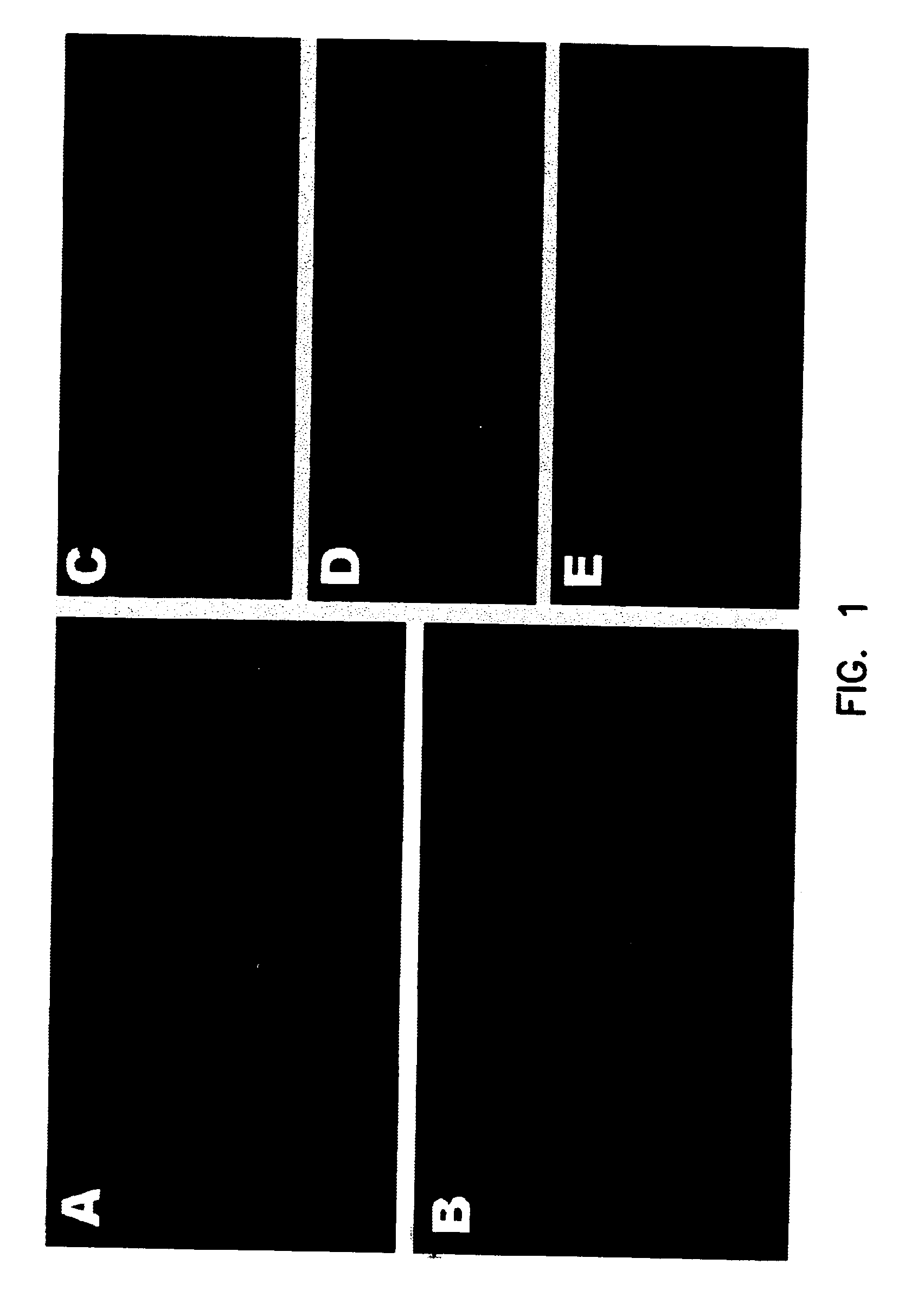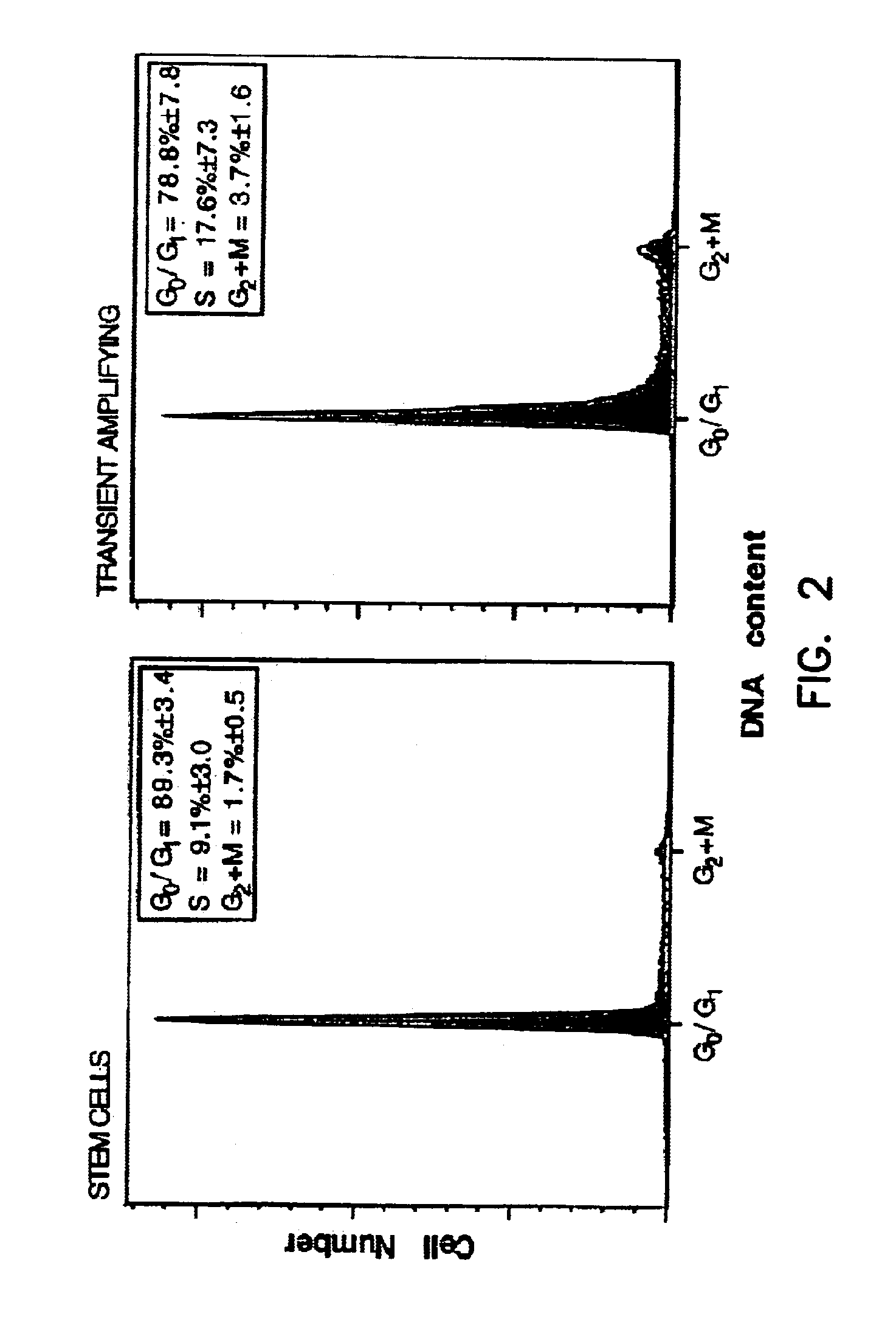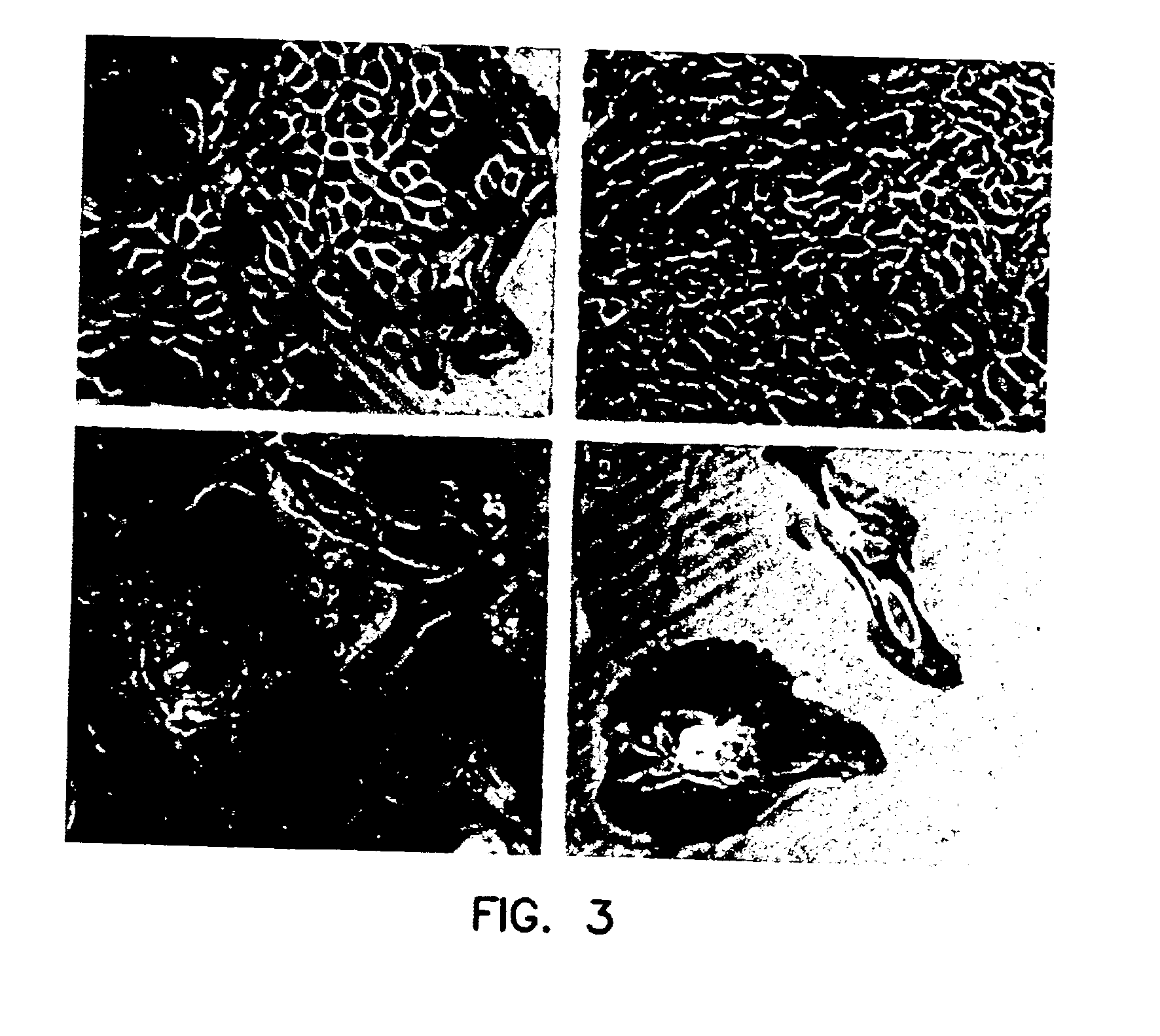Methods to prepare and use epidermal stem cells
a technology methods, applied in the direction of genetically modified cells, instruments, drug compositions, etc., can solve the problems of total loss of tissue expression, affecting the immunogenicity of keratinocytes, and affecting the survival rate of epidermal stem cells, etc., to achieve the effect of low immunogenicity of keratinocytes
- Summary
- Abstract
- Description
- Claims
- Application Information
AI Technical Summary
Benefits of technology
Problems solved by technology
Method used
Image
Examples
example 1
Materials and Methods
Preparation of Cells for Flow Cytometry
[0026]Label-retaining cells were made as previously described (Bickenbach, 1998). Briefly, ten and eleven day old mice were given four injections of BrdU, then allowed to grow for 30 days with no further labeling. At then end of the chase period, the adult mouse ears were incubated in 3 mM EDTA at 37° C. and the epidermis separated from the dermis; the epidermal sheets were placed for 10 minutes in a sterile tube containing 0.25% trypsin at 37° C. and gently shaken to dissociate into single cells. The dissociated basal cells were centrifuged and resuspended at 107 cells / ml in SMEM (Life Technologies, Grand Island, N.Y., USA) with 0.05 mM Ca++, 2% chelexed FBS, 1 mM Hepes, 1% penicillin-streptomycin, and 2.5 μg / ml Hoechst 33342. Cells were incubated at 37° C. for 90 minutes, centrifuged, and resuspended in 1 μg / ml propidium iodide in SMEM and kept on ice until the flow cytometric procedure. Neonate epidermal cells were prepa...
example 2
[0047]Homeostasis of the hematopoietic system, like the epidermis, is maintained by somatic stem cells which give rise to stem cells and TA cells. TA cells undergo a finite number of cell divisions before differentiating and leaving the proliferative compartment, whereas the stem cells persist throughout the lifetime of the organism (Cairns, 1975). Recently it was demonstrated that these adult somatic stem cells have the remarkable capacity to differentiate into other tissue types (Jackson, 1999), and have a plasticity only expected of embryonic stem cells. As described below, epidermal stem cells also have such tissue plasticity, and differentiate into mesenchymally-derived tissues, such as adipose and hematopoietic tissues.
I. Administration of Epidermal Stem Cells To Lethally-Irradiated Mice
Materials and Methods
Epidermal Stem Cell Isolation
[0048]Skin samples obtained from neonate or adult C57BL / 6-EGFP mice are incubated in 0.25% Trypsin or Dispase II overnight at 4 C., the epiderm...
example 3
[0085]The recent explosion in interest in stem cell research is due in large part to the recognition that a broad variety of adult tissues contain stem cells, and that these somatic stem cell populations may be pluripotent. At least they may be able to repopulate other adult tissues. However, there is no evidence that somatic stem cells are equivalent to embryonic stem cells. Epidermal stem cells appear to be true stem cells for adult skin in that they are self renewing, can recapitulate the epidermis, and can express a recombinant gene in the skin for long periods of time (Dunnwald, 2001). However, no one has evaluated them for embryonic functions.
Materials and Methods
[0086]Epidermal stem, TA, and total basal cells are isolated from back skin of C57BL / 6-EGFP neonatal mice. 4-day C57BL / 6 blastocysts are injected with 20 cells each of GFP-labeled epidermal stem, TA, or total basal cells. 15 blastocysts are transferred to each of 5 mothers for each cell type and for each harvest time ...
PUM
 Login to View More
Login to View More Abstract
Description
Claims
Application Information
 Login to View More
Login to View More - R&D
- Intellectual Property
- Life Sciences
- Materials
- Tech Scout
- Unparalleled Data Quality
- Higher Quality Content
- 60% Fewer Hallucinations
Browse by: Latest US Patents, China's latest patents, Technical Efficacy Thesaurus, Application Domain, Technology Topic, Popular Technical Reports.
© 2025 PatSnap. All rights reserved.Legal|Privacy policy|Modern Slavery Act Transparency Statement|Sitemap|About US| Contact US: help@patsnap.com



